#the earliest of the early 1900s
Text
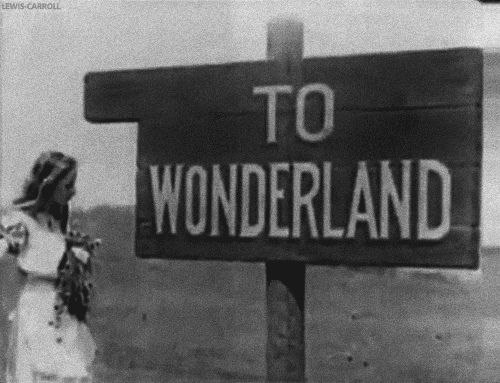
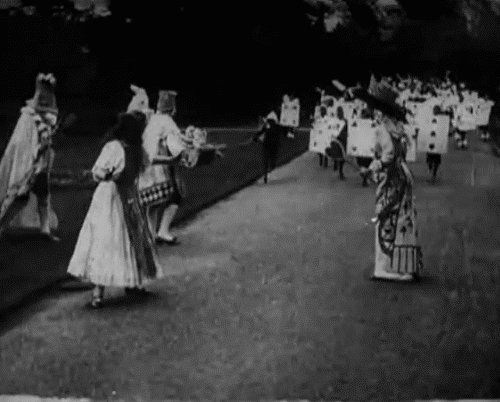
Alice in wonderland (1903)
#cottagecore#alice in wonderland#lewis carrol#1903#the earliest of the early 1900s#gotta love it!#film noir me any day!#same goes for silent films#gotta love the early silent movie version of stuffs#nature#early 1900s#b&w#naturecore#vintage#animation#films#classic movies#nostalgia#silent movies#gif#video
1K notes
·
View notes
Text
.
#just saw someone online say they think angel wasn’t close with his mom & didn’t have a relationship with his mom at all#which is a totally valid interpretation/headcanon; absolutely#however my italian ass went ??????????????#knowing how much italian mothers—ESPECIALLY old country traditional italian mothers—not only love their sons#but love the absolute fuck out of their BABY sons#the youngest#the littlest#the baby of the family#is fucking sacred#especially if it is a boy#now obv angel has molly#but he is still by definition the youngest SON#so i’ll be super surprised if his relationship with her is nonexistent#then again who knows how much they’re going to lean into angel’s italian heritage#if they lean into it AT ALL past the mafia#and immigrating to new york#which also raises so many questions like was he born in italy and then moved as a kid to america like so many people did during the early 19#early 1900s????? or did his parents immigrate even EARLIER than that and he was born on american soil???#the very earliest angel could’ve been born based on his age and when he died is 1903#about half of those early immigrants arrived between 1900-1910#so#many questions so many questions#i rly do hope they decide to lean into angels italian roots at LEAST a little#but that’s purely because i am italian#so i’d just love to see some italian-american stuff here#anyway this is just me rambling i have to go to bed#clari chatters
8 notes
·
View notes
Text
Cab Calloway - Minnie the Moocher
1931
"Minnie the Moocher" is a jazz-scat song first recorded in 1931 by Cab Calloway and His Orchestra, selling over a million copies and was the biggest chart-topper of that year. "Minnie the Moocher" is most famous for its nonsensical ad libbed ("scat") lyrics. In performances, Calloway would have the audience and the band members participate by repeating each scat phrase in a form of call and response, eventually making it too fast and complicated for the audience to replicate. The song is based lyrically on Frankie "Half-Pint" Jaxon's 1927 version of the early 1900s vaudeville song "Willie the Weeper".
"Minnie the Moocher" was inducted into the Grammy Hall of Fame in 1999, and in 2019 was selected for preservation in the National Recording Registry as "culturally, historically, or aesthetically significant" by the Library of Congress.
In 1978, Calloway recorded a disco version of "Minnie the Moocher" on RCA Records which reached number 91 on the Billboard R&B chart. "Minnie the Moocher" has been covered or simply referenced by many other performers. Its refrain, particularly the call and response, is part of the language of American jazz. At the Cab Calloway School of the Arts, which is named for the singer, students perform "Minnie the Moocher" as a traditional part of talent showcases.
In 1932, Calloway recorded the song for a Fleischer Studios Talkartoon short cartoon, also called Minnie the Moocher, starring Betty Boop and Bimbo, and released on March 11, 1932. Calloway and his band provide most of the short's score and themselves appear in a live-action introduction, playing "Prohibition Blues". The thirty-second live-action segment is the earliest-known film footage of Calloway. In the cartoon, Betty decides to run away from her parents, and Bimbo comes with her. While walking away from home, Betty and Bimbo wind up in a spooky area and hide in a hollow tree. A spectral walrus—whose gyrations were rotoscoped from footage of Calloway dancing—appears to them, and begins to sing "Minnie the Moocher", with many fellow ghosts following along, during which they do scary things like place ghosts on electric chairs who still survive after the shock. After singing the whole number, the ghosts chase Betty and Bimbo all the way back to Betty's home. In 1933 another Betty Boop/Cab Calloway cartoon with "Minnie the Moocher" was The Old Man of the Mountain.
Calloway performed the entire song in the movie Rhythm and Blues Revue (1955), filmed at the Apollo Theater. Much later, in 1980 at age 73, Calloway performed the song in the movie The Blues Brothers. Calloway's character Curtis, a church janitor and the Blues Brothers' mentor, magically transforms the band into a 1930s swing band and sings "Minnie the Moocher" when the crowd becomes impatient at the beginning of the movie's climactic production number.
"Minnie the Moocher" received a total of 71,1% yes votes!
youtube
1K notes
·
View notes
Text
What's most amazing about people who hate that birds are dinosaurs is that, without the discovery of birds being dinosaurs in the 1960s, none of y'all would have ever actually cared about dinosaurs
the history:
dino craze in 1800s. people thought, birds are very similar to these guys. Dollo fucked it up, made a bad theory, and people stopped thinking that
Early 1900s, dinosaurs deemed sluggish, stupid, pointless evolutionary failures. most people not really into dinosaurs anymore. this continues until
1960s: Deinonychus discovered. suddenly, dinosaurs interesting again: vibrant, lively, warm blooded animals. Also... birds might be dinosaurs?
from the 60s through the 70s, a slow buildup of dinosaur culture - both in crappy stop motion movies, but also in children's books and other media
80s cladistics revolution shows birds are living dinosaurs, though not without flaws. documentary after documentary is made, causing the major dinosaur boom of the late 80s and early 90s
the peak of this boom are the A&E and PBS documentaries, which both outright state birds are dinosaurs
cartoons like land before time and other dinosaur content keep coming out too, especially at the end of the 80s and the earliest 90s
the book jurassic park, referencing the birds are dinosaurs thing, is written in the late 80s. in the early 90s, is adapted into one of the greatest blockbusters of all time. now dinosaur interest is MAINSTREAM.
jurassic park isn't the start of the dinosaur boom, it is the apex
90s becomes the decade of dinosaurs, with tons of new discoveries, television shows, documentaries, and other programming
1996 first feathered "nonavian" dinosaur discovered. birds are dinosaurs is the closest thing we have to proven phylogenetic fact
1999 walking with dinosaurs premieres, revolutionizing the dinosaur-documentary genre.
early 2000s becomes the age of Period-Type Dino-Docu-Dramas
velociraptor is determined to have feathers
suddenly, dinosaur mania starts to die in the later 2000s
even though discoveries keep happening and we learn so much in the 2010s, the 2010s becomes a very regressive time - a sort of reactionary response to the birdification of dinosaurs and the dinosaurification of birds. the height of this is jurassic world
we may be in the middle of a dino-docu-drama revitilization thanks to prehistoric planet. stay tuned on that one
like, everyone was fine with the birdification of dinosaurs up and until they looked "feminine" on the outside, because of feathers.
It's just all such transparent misogyny and homophobia and people who react against feathered dinosaurs or birds being dinosaurs are just... so transparently parroting conservative talking points
Anyways, yeah. without birds are dinosaurs, you wouldn't have jurassic park. Sooooo
#I don't know why I keep talking about this#I'm procrastinating my museum collection conservation assignment tbh#birds are dinosaurs#feathered dinosaurs#jurassic park
2K notes
·
View notes
Text
Inspired by @hotvintagepoll, here's another bracket featuring some hot vintage actors- but instead of being about actors from a particular medium, this one's about actors associated with a particular genre:
The Hottest Vintage Sci Fi/Fantasy Actors Bracket!
I'll be starting with a men's bracket.
Submissions for the men's bracket are open! You can submit in the google form below. Submissions will now be open until April 27th. Rules for who is eligible are under this form.
What makes an actor eligible for this tournament?
In order to keep this tournament on-theme and not have it turn into a free-for-all vintage actors tournament, all actors submitted should have some kind of strong connection to Sci-Fi and/or Fantasy media. This might mean that they're an actor who has appeared frequently in various Sci Fi/Fantasy works, or that their most well-known role is from something that's Sci-Fi/Fantasy. Actors who aren't necessarily exclusively or primarily thought of as Sci-Fi/Fantasy actors are allowed, provided that they have at least one Sci-Fi/Fantasy work that is considered an iconic role for them. You are free to submit actors you aren't sure count! I'd rather have more submissions than less. Just keep in mind that its possible some people may be cut if it doesn't feel like they really fit the tournament.
(Also, as a side note: horror movies with some kind of fantastical/sci fi element also count for this tournament!)
Other rules for submissions & propaganda:
You can submit actors who appeared in work from as early as 1900 to as late as 2000 (so pretty much it has to be 20th century). That way we can cover a range of classic sci fi/fantasy, from some of the earliest SF/Fantasy films to some of the cult classic works of the 80s and 90s.
You can submit actors and propaganda from both movies and television! It just must be from or related to SF/Fantasy material.
Please only submit propaganda where the actor is at least 18! This also means if someone's only notable and eligible SF/Fantasy role(s) is from before they were 18, they are not eligible for this tournament (even if they continued to act generally as an adult, or were in more notable sf/fantasy roles past the 2000 date cutoff)
Live action roles only; voice roles will not be counted for propaganda/eligibility
Actors who aren't considered primarily Sci-Fi/Fantasy actors must have at least one iconic SF/Fantasy role to qualify for the tournament; however, if they've had other lesser known SF/Fantasy roles as well, you are more than welcome to send in propaganda related to these roles, too!
I might put up an FAQ as well if I get a lot of similar questions/for things that need clarifying. In the mean time: submission deadline is April 27th- so send in your favorite hot sci-fi/fantasy men!
#polls#tournaments#vintage actors#vintage science fiction#vintage fantasy#fantasy#science fiction#sci fi#vintage sf/fantasy actors poll
122 notes
·
View notes
Text
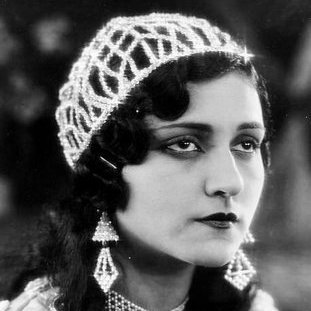
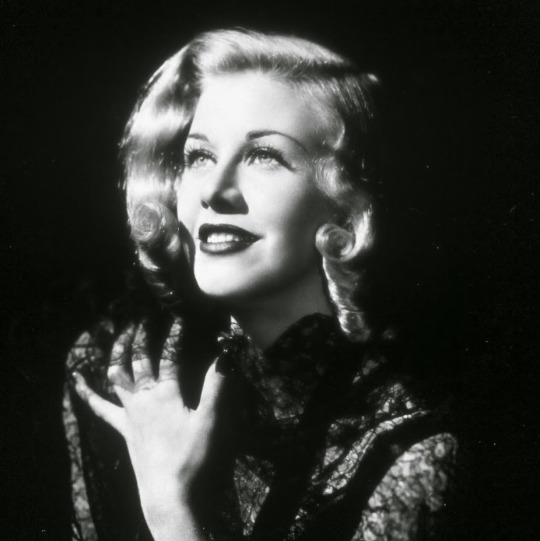
Propaganda
Ruby Myers (Typist Girl, Cinema Queen)— I just recently saw a documentary about her and thought that besides being really pretty, she had a very interesting life. She was born in the early 1900s in India to a Baghdadi Jewish family, and became the first woman to act in an Indian silent film. In the 1930s she started her own film production house, Rubi Pics, way before most female producers in Hollywood broke through. More info can be found in this Golden Globes webpage on her life [link]
Ginger Rogers (Swing Time, Top Hat)—Look I’ll level with you, I’ve never seen her in a musical and I know that she’s an amazing dancer and she’ll be even hotter when I finally watch Top Hat but I’m not submitting her as a dancer I’m submitting her as an ACTRESS. Her comic timing is impeccable!!!!! She’s full to bursting with life and in every role she seems to be having FUN, you can practically feel the twinkle in her eye. With her natural warmth it’s like she’s letting you in on the joke, y’all get to have this fun together! Making me laugh is hot!!! [If you'd like to see Ginger dance, videos below the cut]
This is round 2 of the tournament. All other polls in this bracket can be found here. Please reblog with further support of your beloved hot sexy vintage woman.
[additional propaganda submitted under the cut.]
Ruby Myers:

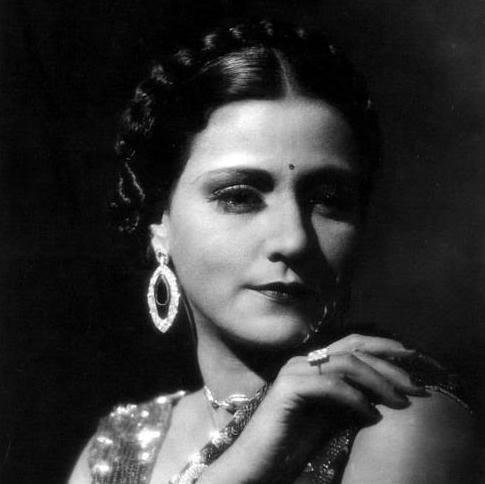
Ginger Rogers propaganda:
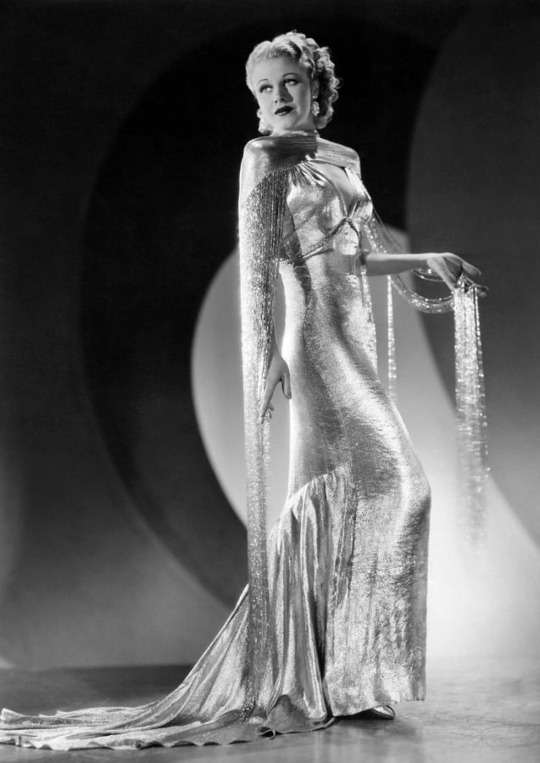
She needs no introduction! An undeniable powerhouse on the dancefloor, and no less talented an actress. I once watched a compilation of cinema's greatest dance scenes and one of her and Fred Astaire's dances was featured, and one of the talking heads said he pitied her for 'having to keep up with him' - or something to that effect. Bullshit, I cry. Ginger Rogers was his absolute equal, and underplaying her incredible skill is downright criminal. I want the 'Cheek to Cheek' sequence from Top Hat to be permanently burned into my memory.

"Backwards in high heels", as the saying goes (though the pedant in me must point out that she in fact spent her fair share of time leading or dancing side-by-side). One of the earliest twinkle-toed ladies of the silver screen, and in terms of acting/persona, her balance of wide-eyed cuteness and movie-star glamour has never quite been replicated.
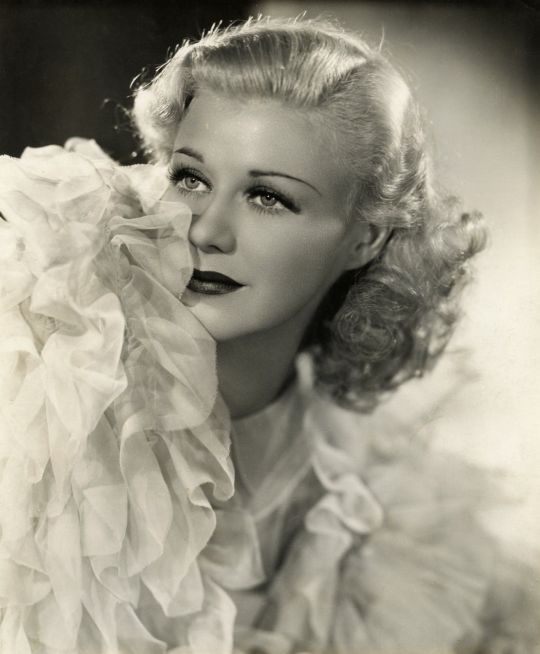
we all know her beloved string of musicals with fred but ginger also has an extensive and varied non-fred filmography that she's great in! a few ginger moments that are important 2 me personally ginger singing “we’re in the money” in gold diggers of 1933, complete with a verse in pig latin bc this whole movie is kinda mocking the concept of anyone actually being in the money in 1933; ginger and una merkel singing a verse of “shuffle off to buffalo” in 42nd street, providing some statler & waldorf-esque commentary on newlyweds from the upper berth of a railway car (interesting that belly was apparently a risque word in 1933 - maybe its bc the lyric is innuendo-ing about out of wedlock pregnancies - and that panties was a term for men’s underthings!); a favorite fred & ginger number
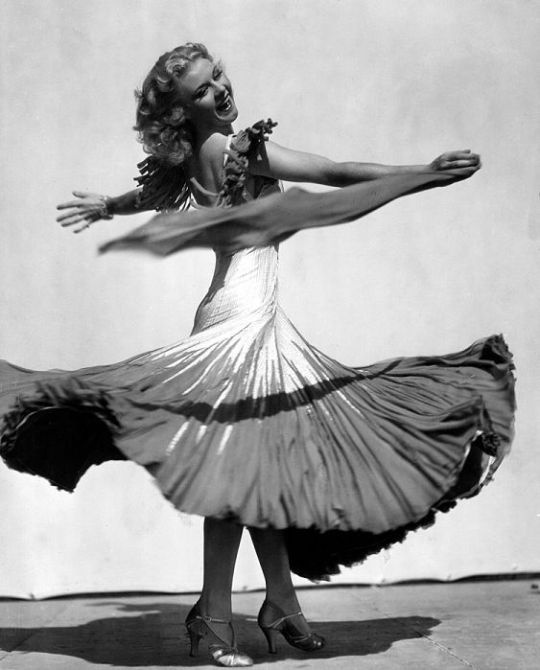
Ginger Rogers could do everything! She could sing, dance and act. She was hilarious in comedies, moving in dramatic roles (she won an Oscar for Kitty Foyle in 1940) and absolutely gorgeous!
Listen, no shade to Fred Astaire at all, but she both kept up with him step for step and then later went on to WIN AN OSCAR FOR ACTING. (which he did not.) truly a double threat!!!

One of the best dancers in Hollywood! Her work with Fred Astaire is just incredible.
ONE LINE: "Everything Fred did, Ginger did backwards and in heels" AND THEYRE RIGHT! Rogers was a total dance badass, and a lot of movie buffs know the story, but the Never Gonna Dance number from Swing Time took almost 50 takes, and allegedly by the end of filming it her white shoes had been stained pink because her feet were bleeding. As a note, she looks crazy gorgeous in this number. Watching these two dance is insane. They match up to each other in a way my mom describes as "divine" and she's right. DANCE NUMBERS!
youtube
Let's Call The Whole Thing Off (Shall We Dance, 1937, dancing starts at 3:14, they're in ROLLERSKATES)
youtube
(Ginger Rogers is the hottest woman ever to live in this number. seeing this as a teenager altered my brain chemistry)
youtube
(also watch her feet and how she moves opposite Astaire in this one. We all know our boy Freddie had that precision demon but jesus christ Miss Rogers, let a girl live!)
Pick Yourself Up, Swing Time 1936 (Everyone's seen this one but by god you are going to see it AGAIN!)
youtube
Shall We Dance, 1937 (duet begins at 2:34)
youtube
Smoke Gets In Your Eyes, Roberta 1935 (There's just something about Ginger Rogers in a slick black dress man)
youtube
The Continental, The Gay Divorcee 1934
youtube
God she's MAGIC in this one.
Gay Divorcee's Ending Montage 1934The infamous table and chairs spin happens at about 0:49. Pay CLOSE attention to her in this bc it looks like witchcraft and I feel lightheaded whenever I watch this movie bc shes THAT awesome.
youtube
She is a miracle to watch. Sorry for the sheer amount of clips. My entire family is like madly in love with Ginger Rogers.
114 notes
·
View notes
Note
shit... i've applied to edinburgh for biomed - just how awful was your time there?
Worth mentioning just because I didn’t enjoy it, doesn’t mean you’ll hate it!
Can’t speak much for biomed, but looking back on my joint degree it was a recipe for disaster and burnout. Perfectly fine if I’d come from a wealthy family and didn’t need to be concerned about bills, place to live etc but I worked my entire way through uni and missed out on a lot.
The fact people could go study at the library on Saturday/Sunday morning and then have the rest of their day was genuinely alien to me until a few months ago when I was in Edinburgh and went for a walk and saw it.
I always worked a full day at weekends and throughout the week after classes, I had next to no time. My lecturers didn’t appreciate I had to work to pay rent and eat.
Chinese department annoyed me because it didn’t focus on what I was interested in, think we had one small module focused on language for business. Meanwhile I was doing full courses on Chinese silent film for the early 1900s - not as riveting as it sounded.
Russian department was a joke. It allowed Russian native speakers to take it (something the Chinese department banned) and their course was marketed to complete beginners. So even the memories of my earliest 1st year classes was of the lecturers neglecting beginners to have full fledged conversations with the Russian students who literally went to their homes in Moscow and St Petersburg over Christmas break and summer.
At a more general level, the gulf between super rich students and working class students were huge. I was the only working class Scottish person in my later courses, and dealing with certain wealthy students was a nightmare. They live on a different planet.
Left feeling very disillusioned with the whole experience as you can probably tell if you’ve read this far.
90 notes
·
View notes
Text
I Think The Sharpes' China Is Diagetically Davenport Imari 2614 And Not Royal Crown Derby Imari 2451 And Here's Why
the earliest examples of the RCD pattern I've seen are early 1900s, though apparently they started making it in 1887. seems unlikely that the adult siblings could afford a new, large china set
but. look at what Davenport was doing as early as 1870:


It's the same. Pattern.
I know this pattern. I have spent a truly deranged amount of time staring at this pattern. I have a whole-ass tea set in this pattern approx. three yards from me in a glass-fronted cabinet at this very moment. and this is the exact same pattern, but being made (it seems to me) at least 17 years before RCD started doing it. oh, and Davenport closed its doors in 1887- the same year the RCD Imari 2451 apparently hit the market
the movie props are RCD, to be sure. I know this because I have one- a cup and saucer set from Cynthia Finlay's Antiques in Toronto, who rented the china out to the CPeak production team. but I believe that, in-story, it's actually the Davenport
thank you for coming to my "Marzi, go to bed" TED Talk
#antiques#crimson peak#Also Cynthia Finlay does take credit card orders over the phone#and at least ships to the US though I don’t know about other international destinations#just saying if anyone else wants a CPeak Relic#they seemed to have several cup and saucer sets left#which I guess makes sense considering it’s not a smash hit movie#fun fact: the set that Edith and her father use at home was also rented out to the handmaid‘s tale#but that one’s being sold as a full set and in the multi-thousand dollar range
56 notes
·
View notes
Text
Some of my favourite terminology for sex, sexuality, and gender that have mostly fell out of use:
Sapphist: Similar to the term Sapphic which is still in use, derived from the woman loving Greek poet Sappho. The -ist has implications of doing rather than being. A Sapphist is a woman who has romantic and sexual relationships with other women. It was commonly used in the 19th and early 20th century, eventually replaced by lesbian in common usage. Some famous historical figures who used this term include Vita Sackville-West, who also used the terms lesbian and homosexual.
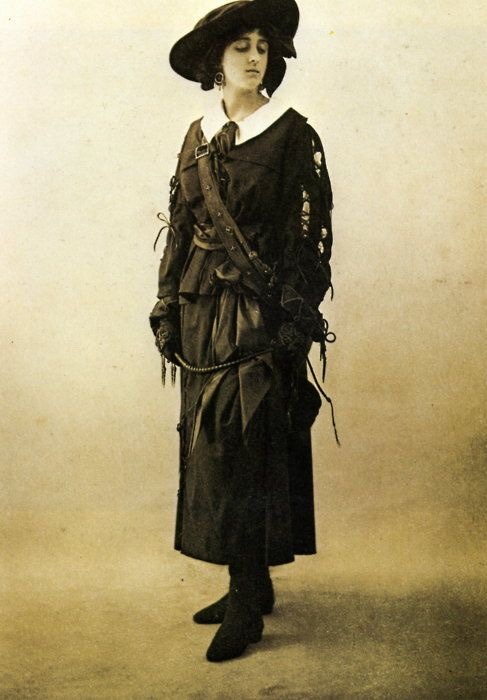
Mukhannathun: Translates roughly to "effeminate ones" or "ones who resemble women", typically refers to a feminine male, an intersex person, or one whose sex is indistinct. Modern scholars place the term Mukhannath in correlation with trans feminine. Mukhannathun traditionally took on the social roles of women in Saudi Arabia and feature in Ḥadīth Islamic literature. They were often musicians and entertainers, Abū ʿAbd al-Munʿim ʿĪsā ibn ʿAbd Allāh al-Dhāʾib (or Tuwais) being perhaps the first famous Mukhannath musician. I could not find any depictions of Mukannathun.
Invert: Sexology in the early 20th century believed that same sex desire and cross gender identification were natural in some people. It was coined in German by Karl Friedrich Otto Westphal (1833-1890) and translated across Europe and eventually into English as sexual inversion by John Addington Symonds Jr. (1840-1893) in 1883. Inverts were people whose natural sex instinct (heterosexual, cisgender) were "inverted", causing a natural desire for the same sex or to live as the other sex. It was thought that most inverts desired a relationship with a "normal" member of their own sex, for example a masculine presenting woman would desire a feminine presenting "normal" woman, a feminine presenting man would desire a masculine or "normal" man. While most sexologists thought sexual inversion was natural, they worried about corruption of "normal" people by inverts. The writer 'John' Radclyffe Hall (1880-1943) identified as an invert and explored the life of inverts in her 1928 novel The Well of Loneliness.
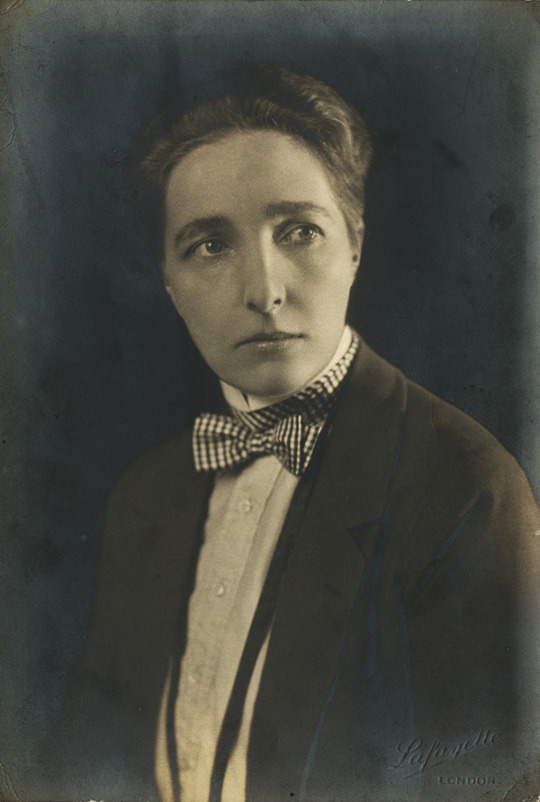
Uranism: A Uranian was a man who was romantically or sexually interested in other men. One of the earliest records of the term comes from Friedrich Schiller's 'Sixth Letter' in the Aesthetic Education of Man in 1795. It is derived from the ancient Greek goddess Aphrodite Urania, a manifestation of Aphrodite who was free of physical desire and instead was attracted by mind and soul. Ancient Greek literature was very important in the early formations of queer identity and self-recognition. Oscar Wilde (1854-1900) was known to use the term Uranian.
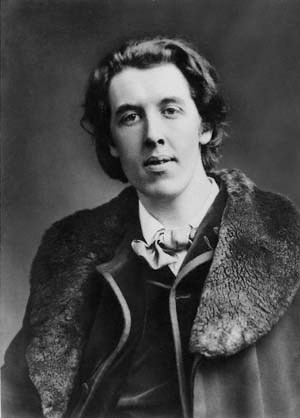
Tribadism: Derived from the Greek "tribas" which means "to rub", tribadism denotes both a sexual position (now known as tribbing or scissoring) and a woman who seeks to sexual dominate and/or penetrate another woman. This term could also be used to describe an intersex person who lives as female and is the penetrating partner during sex with women. It became the most common word to describe any kind of sexual intimacy between women in English literature from the 16th to 19th centuries. Marie Antoinette, queen of France from 1773 to 1792 was "defamed" in many anti-monarchist newspapers as being a tribade.

Eonism: Eonism was coined by English sexologist Havelock Ellis (1859-1939) to describe cross gender identification and presentation. "Eon" after the French diplomat Charlotte-Geneviève-Louise-Augusta-Andréa-Timothéa d'Éon de Beaumont, who was assigned male at birth but lived as a woman from 1777 until her death in 1810. Eonism was later replaced by transvestism in popular usage in the early to mid 20th century, coined by Magnus Hirschfeld (1868-1935) in 1910.
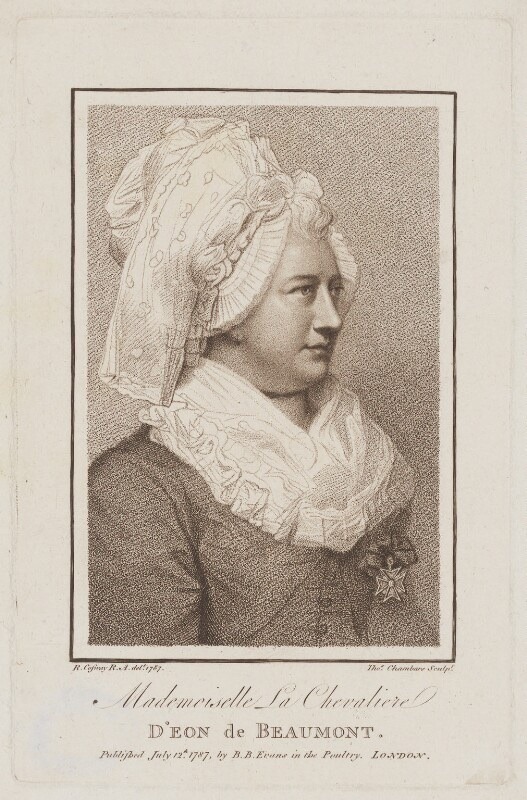
Eunuch: the term Eunuch has many connotations but the one common factor that almost all definitions share is that a eunuch is an intentionally castrated male. Eunuchs can also be uncastrated, but put into the social role as eunuch due to their 1) feminine presentation 2) inability to procreate 3) attraction to men. Eunuchs were not seen as men in most cultures, they were specifically chosen and castrated in order to fill a specific, separate social role from men and women. It was sometimes punitive, for example under Assyrian law men who were caught in sexual acts with other men were castrated. Eunuchs often had positions in royal households in the Ancient Middle East, their sexlessness was seen to enhance their loyalty to the crown as they were less likely to be distracted by sex or marriage, and it also allowed for jobs to be given on merit, and not inherited since Eunuchs could not reproduce. In Ancient Greece certain sects of male priests were eunuchs. China had Eunuchs who were fully castrated (penis and testicles) and high ranking in imperial service. In Vietnam, many eunuchs were self castrated in order to gain employment in the royal households.
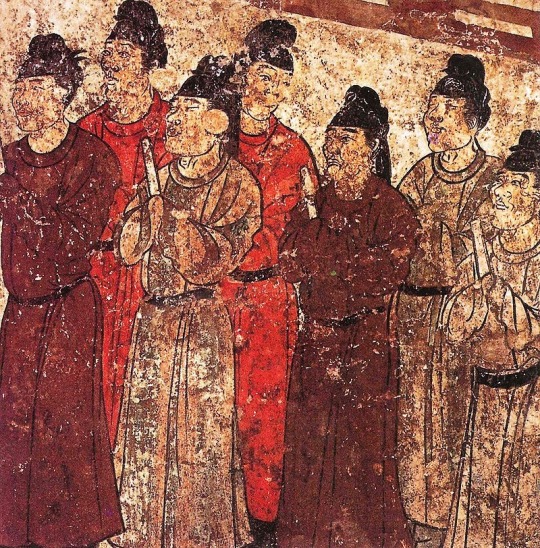
Homophile: coined in 1924 by Karl-Günther Heimsoth (1899-1933) in his dissertation Hetero- und Homophilie. The term was in common use in the 50s and 60s in gay activism groups. It was an alternative to homosexual coined in 1868 by Károly Mária Kertbeny (1824-1882) which was thought to have pathological and sexual implications, whereas homophile prioritised love and appreciation over the sex act or pathology. It is still in use in some parts of northern Europe. The Homophile Action League was founded by lesbian couple Ada Bello (1933-2023) and Carole Friedmann (1944-?) in Pennsylvania, U.S.A. in 1968, a year before the Stonewall Riots.
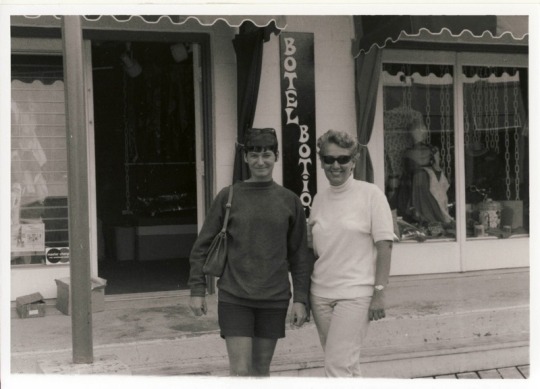
111 notes
·
View notes
Text
Spectember Day 24: Pre-Dougal Dixon spec

Although for our current consensus how life might evolve on other planets the article has aged considerable bad in terms of plausibility, I found fascinating the article made by H.G. Wells titled "The things that live on mars” as one of the earliest attempts on speculate another ecosystem outside of our world attempting to be at least the possible conditions of Mars that was speculated could have been if it was an habitable world.
Is perhaps too simple as a spec bio exercise, but seems one of the most extensive with what was available as information could provide around early 1900 in astronomy, with nothing but our own life as a base Wells tried to explore briefly the possible biosphere arrangement that an habitable mars would be with some bases of biology and ecology, with the conditions of the planet exhibit, quasi-vertebrate lifeforms that evolved and resembled the terrestrial life on earth, quite far of the War of The Worlds Martian invaders that were octopus like form and the context these were made for the politics of the time.


#speculative evolution#exobiology#mars#alternative evolution#spectember#extraterrestrial#speculative biology
68 notes
·
View notes
Text
Ruby Dandridge

Dorothy Dandridge was an American actress from the early 1900s through to the late 1950s. Dandridge is best known for her role on the radio show Amos 'n Andy, in which she played Sadie Blake and Harriet Crawford, and on radio's Judy Canova Show, in which she played Geranium.
Born Ruby Jean Butler in Wichita, Kansas, on March 3, 1900, she was one of four children. Dandridge's parents were Nellie Simon, a maid, and George Butler, who was a janitor, grocer and entertainer. Dandridge's father was also "a famous minstrel man."
On September 30, 1919, she married Cyril Dandridge. Dandridge moved with her husband to Cleveland, Ohio, where her daughter, actress Vivian Dandridge, was born in 1921. Her second daughter, Academy Award-nominated actress Dorothy Dandridge, was born there in 1922, five months after Ruby and Cyril divorced.
In 1937, Dandridge played one of the witches in what an article in The Pittsburgh Courier called a "sepia representation" of Macbeth in Los Angeles. California. The production began on July 8 at the Mayan Theater. Five years later, she appeared in a production of Hit the Deck at the Curran Theatre in San Francisco, California. One of Dandridge's earliest appearances, thought uncredited, was as a native dancer in King Kong in 1933. Dandridge was also in Junior Miss (1945), Tap Roots (1948), Three Little Girls in Blue (1946), Cabin in the Sky (1943), and Tish (1942). Lillian Randolph, Ernest Whitman, and Ruby Dandridge of the radio cast of The Beulah Show from 1952–1953.
In 1955, Dandridge and her business partner Dorothy Foster bought land in Twentynine Palms, California, with plans to construct a subdivision of 250 homes. Also in the 1950s, Dandridge formed a nightclub act that played in clubs around Los Angeles. A review of her act cited her "flashes of effervescent showmanship" and stated "What Ruby lacks in her voice, she invariably makes up for it with her winsome personality."
Dandridge attended her daughter Dorothy's funeral in 1965.
On October 17, 1987, Dandridge died of a heart attack at a nursing home in Los Angeles, California. She was interred next to Dorothy at Forest Lawn Memorial Park Cemetery in Glendale, California. In the 1999 film Introducing Dorothy Dandridge, Ruby is portrayed by Loretta Devine.

23 notes
·
View notes
Text
🦉👒The Influence of One Piece in The Promised Neverland (A very self-indulgent post)
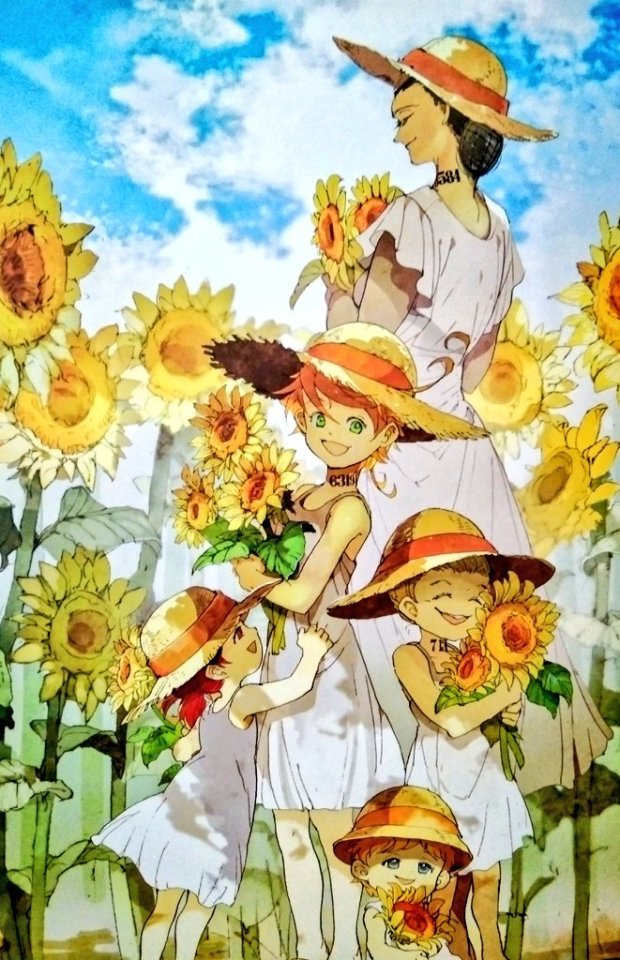
The straw hats worn by the girls in The Promised Neverland ch. 47 color cover were a tribute to One piece's 20th anniversary. It has always been Shirai sensei's favorite tpn illustration ever since.
An entire generation in Japan grew up following One piece. Many of the young readers from late 1900s are now the newgen mangaka currently working in Shonen jump.
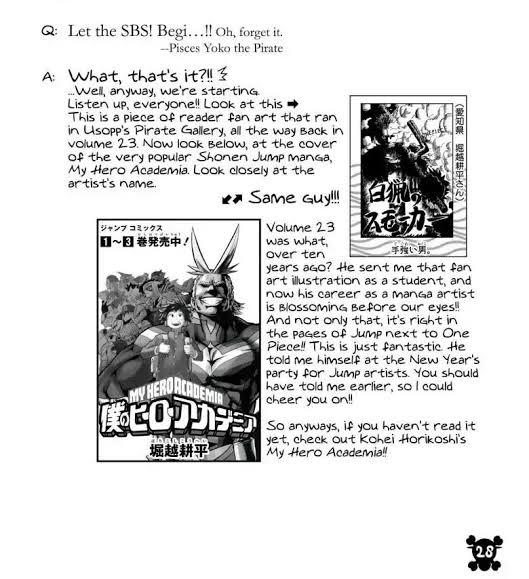
Kouhei Horikoshi as a high schooler (15yo) sent a one piece fanart to Oda in 2002. Twelve years later, he starts his own manga, now promoted by One piece author Eiichiro Oda himself.
One piece got Shirai into JUMP manga.
I started reading Jump Magazine for the first time when I was in Junior High. One Piece was the trigger that made me subscribe to it like a machine, and then I thought “other manga are fun too!”, and thus became addicted.
-Kaiu Shirai (2020), The Promised Neverland artbook.
Suguru Sugita, the person Shirai submitted his og manuscript to, was Toriko's editor in charge. The following year (2014), Sugita became One Piece's manga editor (later its media editor in 2017). Sugita retired from One piece altogether in 2019, while working as TPN editor from 2016 to 2020.
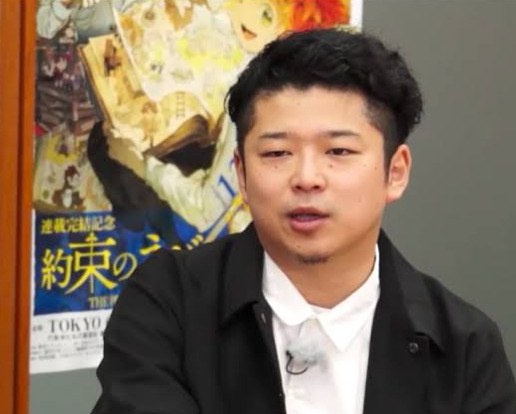

The Promised Neverland + former One Piece editor, Suguru Sugita. On the right is a doodle drawn by Eiichiro Oda sensei introducing him.
"O-Sugi. This is the media editor, Sugita. Well natured, romanticist. Throws in random onomatopoeia. So drippy from head to toe that the girls avoid him. Compliments juniors on an annoying level. Has a strange dream -> ("I'll get myself a Kansai-ben speaking gf within this year!") Has lots of friends, but daydreams too much so he might not be able to get hitched soon."
From TPN's pre-serialization stage to its final days, Sugita was closely involved with both One piece and The Promised Neverland. Regardless of the difference in genre, One piece's influence in TPN is evident, many of which were suggested by editor Sugita.
Following are a compilation of details discussed in the The Promised Neverland fanbook where the author-editor duo noted the influence of One Piece in its creation.
🦉 The food, the biology
(The Promised Neverland Search for Minerva + final arc spoilers)


In One Piece, the characters can obtain special powers by eating cursed fruits called Devil Fruits (Luffy's elasticity, for example). This served as a basis for The Promised Neverland's demon biology. During early stages of TPN first arc, there was no specific concept involving demon's diet (thus we hear two demons casually talking about eating cats). Post escape, editor Sugita suggested to add the concept of 'becoming what you eat', stated to be directly inspired by One Piece (fanbook ch. 2). It was decided that the demons in TPN would be heavily dependant on human meat to maintain their sentience.

One piece x Toriko official crossover spread, two manga in JUMP where food meant a lot more than simply filling your stomach.
"Food" both a narrative and thematic tool behind One Piece, so much so that a recently popular theory is that (avoid if you want) the protagonist's secret dream at the end of his journey is to throw a massive party that would connect different races together in a brotherly bond. Each arc ends with a scene of partying and singing, a musician was one of the first crewmate positions Luffy wanted to fill in his ship.

Yugo's refusal to eat and join the table subtly hinted his refusal to partake in such bonding. It's another detail pointed out in the fanbook (ch. 3). The food scenes in One Piece had not only inspired Shirai but also Haikyuu author, Furudate Haruichi (stated in Haikyuu databook).
🦉 Characters as Inspirations

[Romance Dawn + Goldy Pond spoiler] One piece character Helmeppo was the inspiration behind Goldy Pond demon, Luce. Helmeppo was one of the earliest characters introduced in One Piece (ch.3), a weak but spoiled child of a marine officer who'd exploit his father's influence to get about anything. Luce, the youngest hunter in Goldy Pond, was the son of Dozza. Helmeppo was redeemed eventually, unlike Luce.
[Shabondy Archipelago + TPN final arc spoiler] The World Nobles in One Piece are arrogant slave-owners hailed as gods on earth for their ancestry. Lord Pupo's flashy appearance and simple-mindedness were inspired by them.
[Dressrosa + TPN final arc spoiler] Bartolomeo, an in-series fan of the protagonists, was introduced in One Piece manga at the time of Sugita's debut as One piece editor in 2014 and instantly became popular. In The Promised Neverland, Lambda kids were supposed to obey Norman in a normal manner. But editor Sugita wanted to lighten up the mood and make them goofy fanboys, inspired by Bartolomeo's success.
[Arabasta spoiler] One piece's first major antagonist Crocodile served as a base for TPN characters, mainly antagonists:
When I was drawing dignified characters for TPN, Sugita-san gave me a piece of advice called the "Crocodile Line". Whether or not Crocodile from One Piece would say such a line would determine whether or not the character (I made) was dignified enough. It was a good method. I love Crocodile so there's that too.
-Shirai in The Promised Neverland fanbook (pg. 196)
(continues in reblog 👇)
#one piece#the promised neverland#yakusoku no neverland#eiichiro oda#kaiu shirai#suguru sugita#lmao I can't believe I wrote this#tpn ayshe#donquixote rosinante#posuka demizu#one piece bartolomeo#one piece crocodile#tpn yugo#monkey d. luffy#tpn manga#one piece spoilers#mine
88 notes
·
View notes
Text
As America’s borders moved west, empire thus unspooled through farming and homesteading as much as military conquest. [...] The unfamiliar desert ecology and climate meant that they could not easily deploy their trusted models of farming, animal husbandry, and commerce in places with limited access to water, high and variable temperatures, different soil compositions [...]. To address this challenge, empire-builders in early America took Middle Eastern deserts as a key source of inspiration.
Jefferson Davis’ Camel Corps [funded by a 1855 Congressional appropriation to collect camels from around the Middle East and Northern Africa] was one of the earliest examples of how this worked. [...]
American travel writers, explorers, scientists, and government officials had long described the arid West as a local version of the Middle Eastern and North African desert – an “American Zahara” or a Biblical Orient with spiritual and physical power equal to the Old World deserts [...]. These authors harnessed the “Sahara” trope, Catrin Gersdorf argues, “to deactivate the existential anxieties of the pioneers and to alleviate some of their visceral reactions to the American West’s aridity, recasting it as a quasi-Oriental space containing yet unidentified but extremely valuable historical and cultural riches.” Nineteenth-century authors’ constant references to the Sahara [...] helped [...] settlers imagine the newly American desert lands as a “domestic” Orient and, in this way, [...] familiar. [...]
---
[T]he U.S. Army waged overt war [with Indigenous residents] into the early 1900s. Displacing the people from the land was one thing, but redefining their social and cultural association with the desert was a different matter.
Here again, the camel proved useful. This is vividly illustrated when the U.S. Army finally collected enough camels in Texas to run its first Camel Corps trial to assess the animals’ endurance and suitability for military purposes. The Army’s man in charge, General Edward Fitzgerald Beale, brought Hi Jolly, his fellow cameleers, and a large camel caravan together to travel from Texas to California beginning in September 1857. When the expedition stopped in Los Angeles in January 1858, the San Francisco Evening Bulletin described the scene with dramatized gusto:
General Beale and about fourteen camels stalked into town last Friday week and gave our streets quite an Oriental aspect. It looked oddly enough to see outside of a menagerie, a herd of huge, ungainly awkward but docile animals move about in our midst with people riding them like horses and bringing up weird and far-off associations to the Eastern traveler, whether by book or otherwise of the land of the mosque, crescent or turban, of the pilgrim mufti and dervish with visions of the great shrines of the world, Mecca and Jerusalem, and the toiling throngs that have for centuries wended thither, of the burning sands of Arabia and Sahara where the desert is boundless as the ocean and the camel is the ship thereof.
This account actively rewrites the then-dominant imaginary of U.S. West [...], enlisting the camel to transform it into a whimsical vision of the Old World in the New. [...] Colonization was made friendlier by conceiving of it as a pilgrimage, an act of return. [...] In this way, the territories annexed in the mid-1800s could begin to be imagined as a [...] home [...].
---
All text above by: Natalie Koch. “Double Exposure.” Arid Empire: The Entangled Fates of Arizona and Arabia. 2022. [Some paragraph breaks/contractions added by me. Presented here for commentary, teaching, criticism purposes.]
75 notes
·
View notes
Note
Your post about butch and fem is so important + valid. Two friends of mine are butch and bisexual, but society often thinks they are just lebians because thats what everyone was taught.
hey thank you!
i've been getting a lot of asks to provide sources and i'm working to the best of my ability, but really the best source is finding those other queer people that identify that way. butch bisexuals... gd. what a sexy identity, quite possibly the sexiest people alive. that's me!
the terms did not start in the lesbian community, and they have never been exclusive to it or owned specifically by lesbians. some of the earliest uses of the term butch and femme come from what is known as polari, a code language that was first used among gay and gnc men and then quickly expanded to be used by queers of all stripes. the terms femme for the broad spectrum of feminine queers and butch for the broad spectrum of masculine queers were so ubiquitously used among american queer communities in the early to mid 1900s that it's literally laughable to make the claim that only lesbians use/d them. reading literature, like leslie feinberg's writings, from people who were alive and part of queer communities before the stonewall riots is extremely important to helping one understand the actual history behind our terms and how unnecessarily restrictive and sanitized our terms have become over time.
whether or not people are comfortable with hearing this, the people who tell you butch and femme are lesbian-only terms are parroting logic created by lesbian separatists, which are largely now what we know to be radfems and terfs. it's not a historical argument, it's one specifically designed to exclude trans people, butches, and bisexuals from rightfully identifying as who they are, and it's spread to the affecting the rest of community by that proxy. i understand that language evolves over time but this is not how the words were ever intended to be used, they were intended to, and were used historically in an inclusive fashion, not an exclusive one!
thank you for this, i appreciate it, and let your friends know they are awesome and to keep it up!
64 notes
·
View notes
Text
Dress for a day
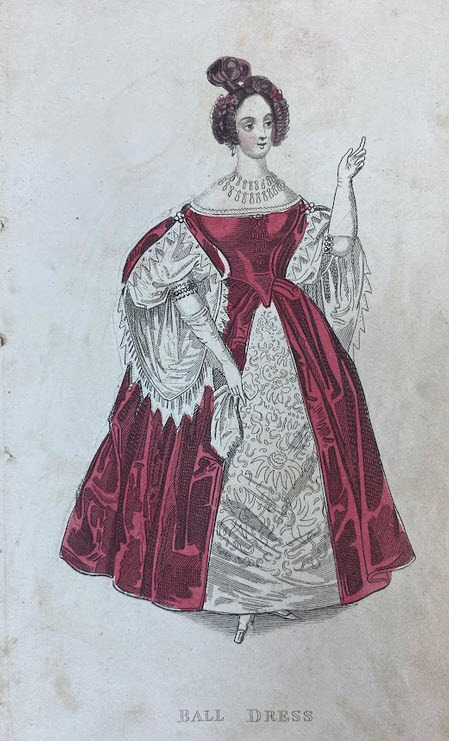
Some of us may have already changed out our wardrobe from winter to summer and are desperate to get those fold lines out of those linen trousers or fluff out that favorite sundress. Though working in a rare book and special collection, we always have a pullover or jumper on hand. Regardless, today we are discussing June and June 1st happens to be “wear a dress day” and in the realm of modern fashion, dresses are not just bound to ladies anymore!



The month of June may be best known for being named after the Roman goddess Juno (also known as Hera). Depending on where you live, June marks the official beginning of summer for the northern hemisphere with the Summer solstice. For southern Hampshire, it is the beginning of winter and the winter solstice. So, whether you are airing out summer or winter dresses, the first is dedicated to dresses for all occasions. The dress can be a simple or complex garment, as well as, formal or casual; but the garment associated with being a dress has been traced back to Egyptians. This particular garment has been traced back to five thousand years and is called the Tarkhan dress which is made of simple linen. The earliest and oldest example of the Tarkhan dress was found in the early 1900s during a tomb excavation and was bundled up with other fabrics that went unnoticed until 1977 when the floor-length shirt was unfurled from this bundle. The description is similar to the simple shift worn under complex attire. The thin linen shift would protect the skin from the rub of corsets and hoop skirts as their popularity grew in fashionable society.
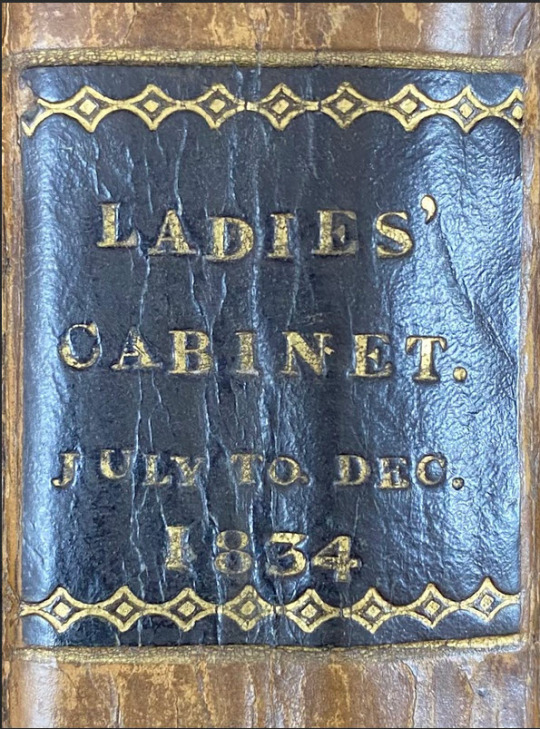
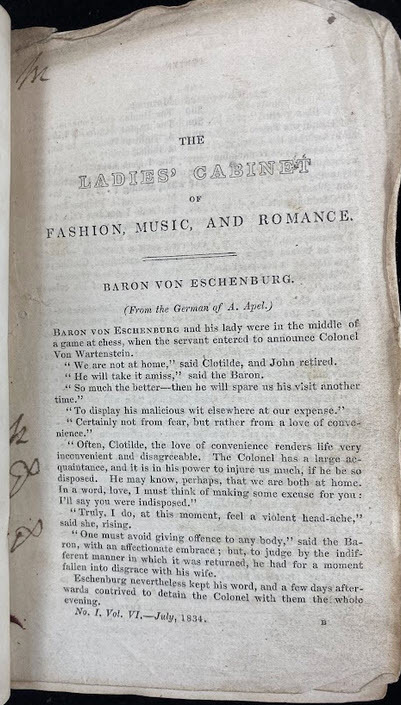
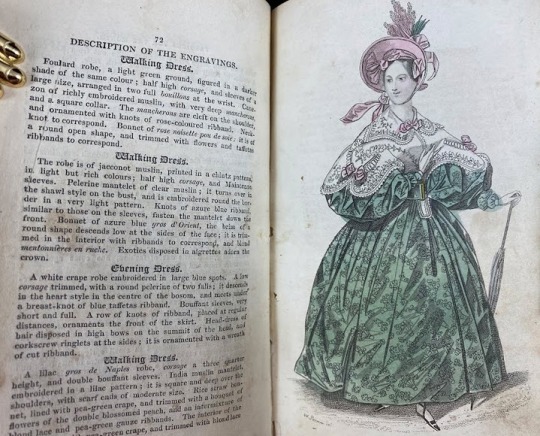
The item from the James Smith Noel Collection being featured for this post features hand-colored plates from a lady’s magazine. The Ladies’ Cabinet of Fashion, Music and Romance (https://bit.ly/3MJtcZv) was printed out of London, England as a small monthly serial series that featured romance stories, poems, and French fashions. The reception of the plates from an artistic lens were not well respected, however, the dresses featured are for the summer to winter season for all occasions which are labeled. The fashions of 1835 differ greatly from the earliest fashions of Egypt and also the fashions of today. We have shed the layers of the garment of yesteryear and introduced the lady’s trousers and even men can wear a dress. Fashion is ever changing and repeating with society.

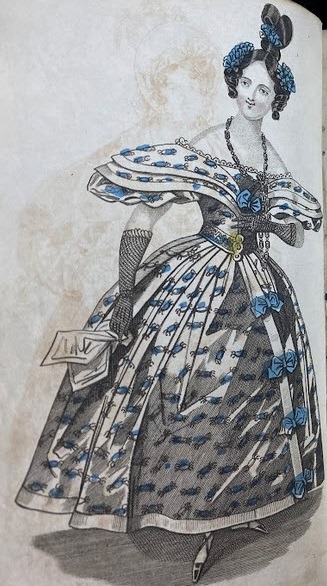
61 notes
·
View notes
Text
for years there's been literary debate about when exactly dracula takes place. there's a wide consensus that the novel happens at some point in the 1890s, but from there, there's no absolute agreement. some people believe the narrative happens in 1897, the year the book was published; some think the epilogue happens in 1897, placing the main events of the book at about 1890. dr. elizabeth miller - widely renowned as a dracula expert - argued adamantly for the main portion of the novel to take place in 1893, placing the epilogue in 1900. for a long time, i was a proponent of the theory that the story began the year after stoker published the novel, in 1898.
i've now come to the conclusion that all of these theories are wrong, and the entries from august 8 and august 11 prove it.
in this post i used the august 8 article about the storm that brought the demeter into whitby to attempt to put a year to the novel. the august 8 entry seems to have happened on a monday, and assuming this is true, the possible years that dracula could have taken place in the 1890s are 1892 and 1898 - which narrows the field substantially. (it also creates arguments for both 1881 and 1887, but i'm ruling them out as being too early to be plausible - stoker himself didn't visit whitby until 1890, which i would consider to be the earliest viable year.)
mina's august 11 journal entry describes a "full moon" on the night of the 10th/early morning of the 11th. for argument's sake (and to make our job a little easier), we'll assume that she doesn't mean a LITERAL full moon, but a moon that looks full or could be easily mistaken for one. 1898's august 10 moon phase was a waning crescent - not nearly full enough to meet our criteria - but the moon on august 10, 1892 was a waning gibbous with 95% illumination. we've cracked the case!! dracula (probably) takes place in 1892, and the epilogue happens in 1899.
did Old Bram put this much thought into the temporal placement of his gothic vampire novel? hard to say, but like. probably not. but I did! and loads of other people have! and i think it's neat that dracula daily led me down this fun little investigatory path of cross-checking moon phases and calendars and literary scholarship!!! that's ANALYSIS, babey!!!!
#anyways go tell all of your friends you know when dracula happens they'll be super impressed#dracula#dracula daily#dd august 8#dd august 11#dracula meta#nat og
241 notes
·
View notes